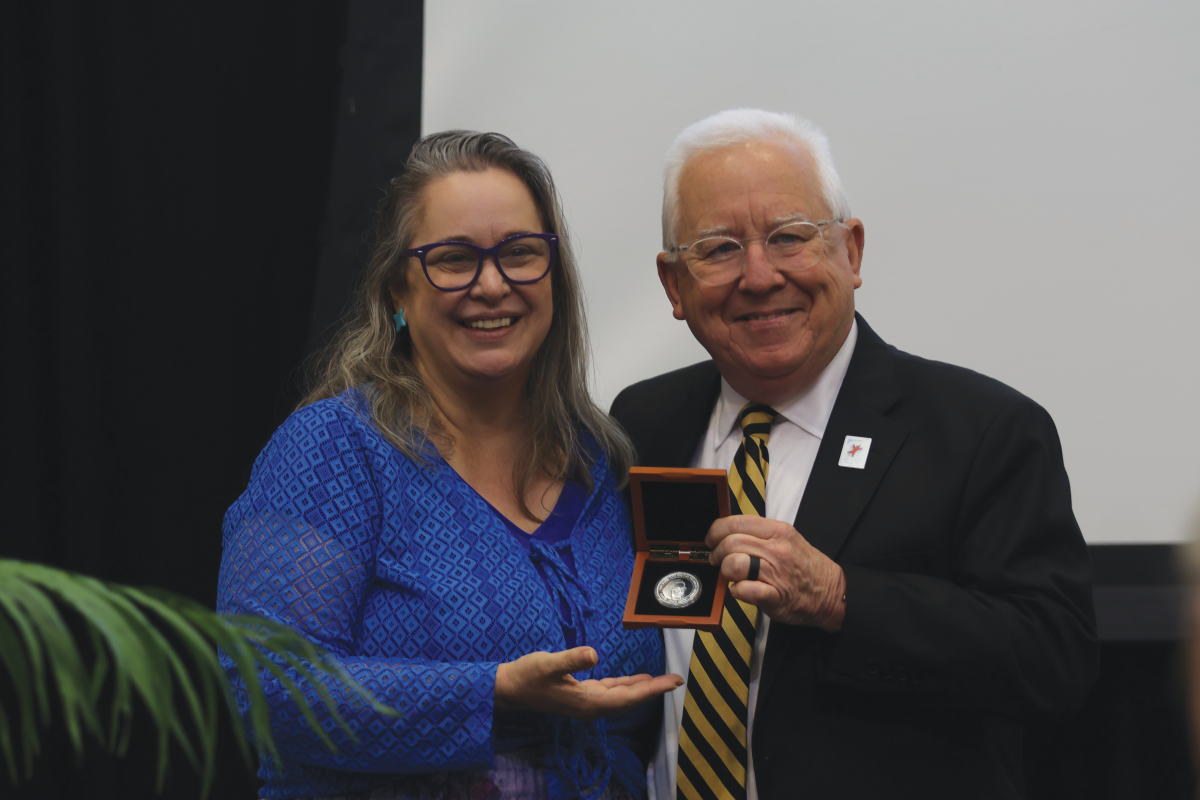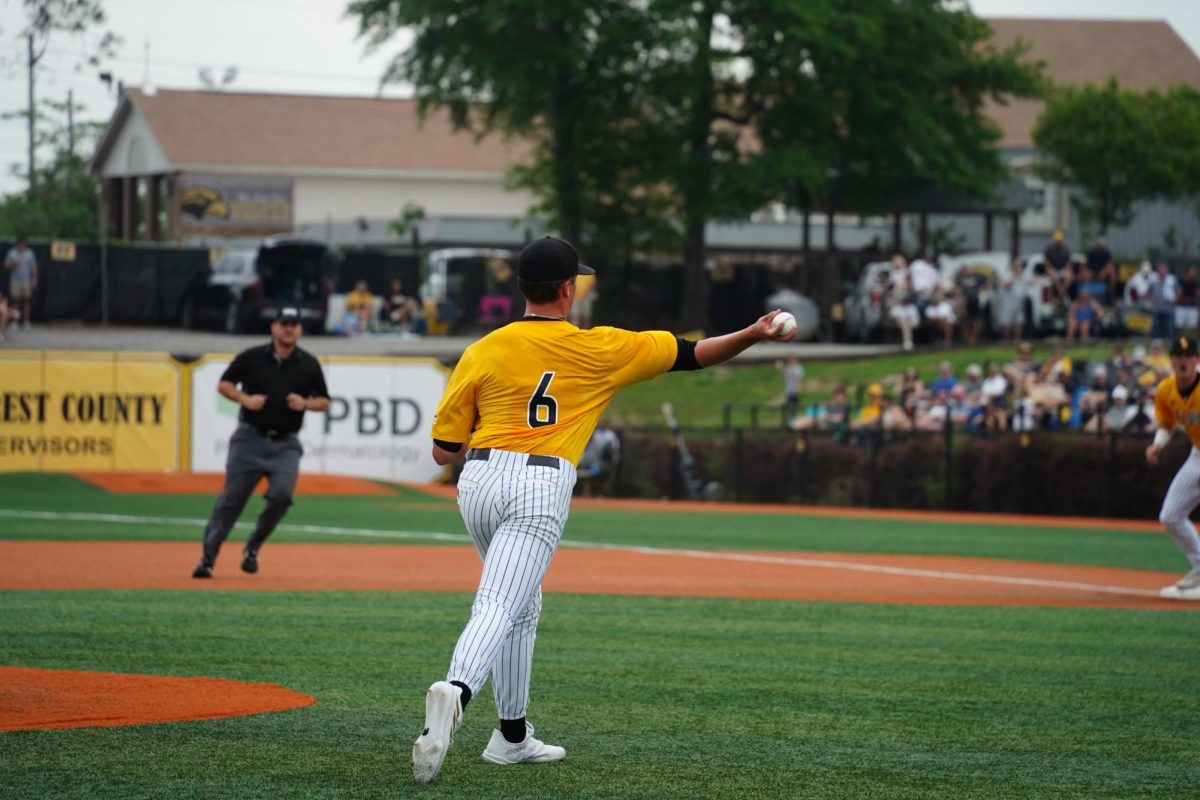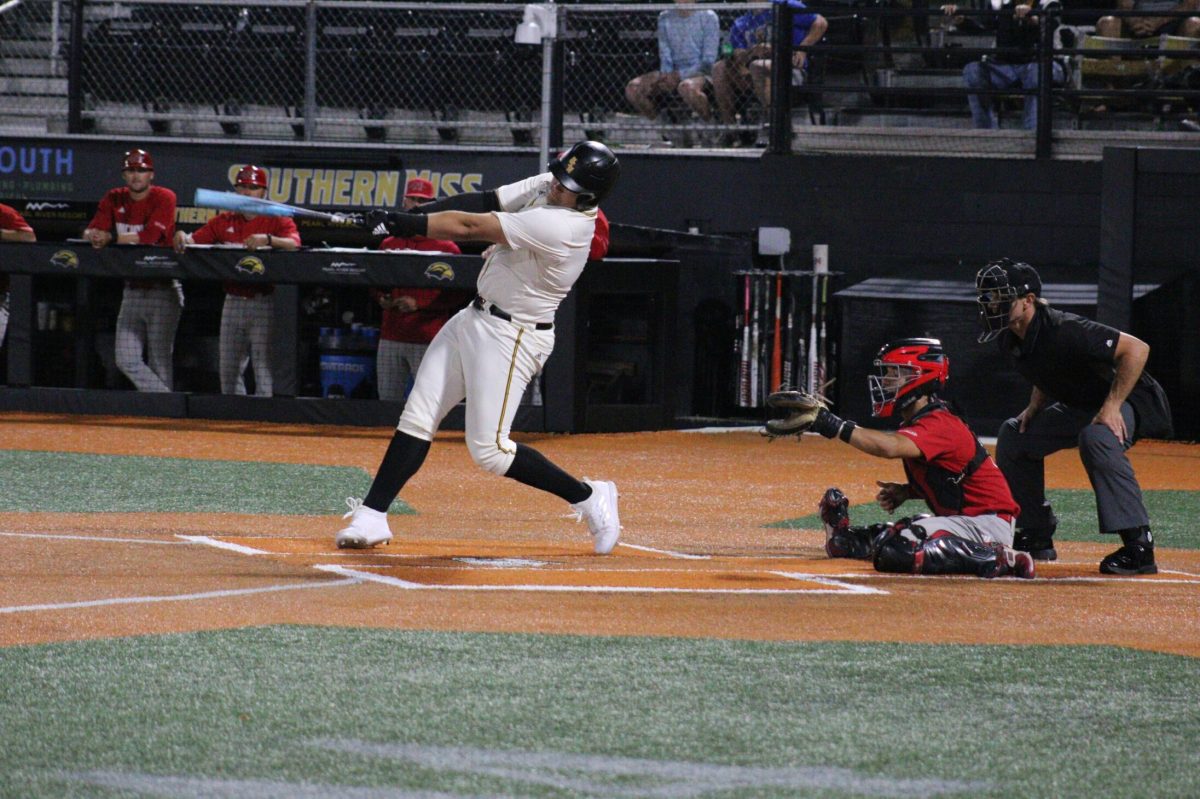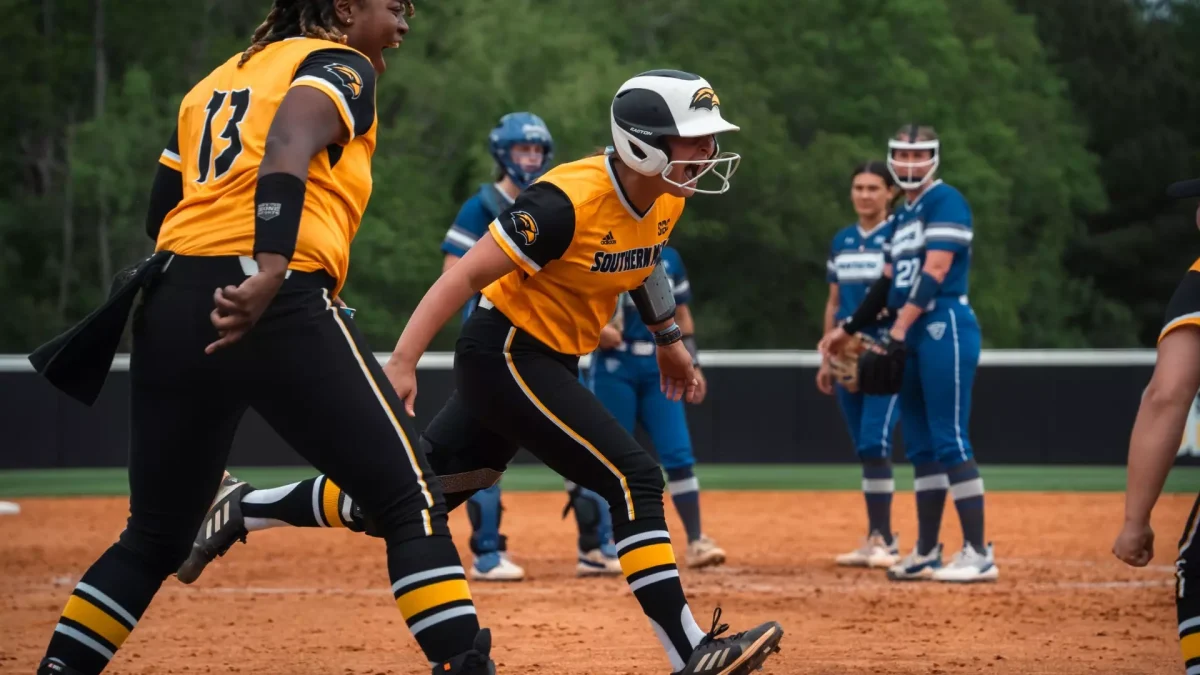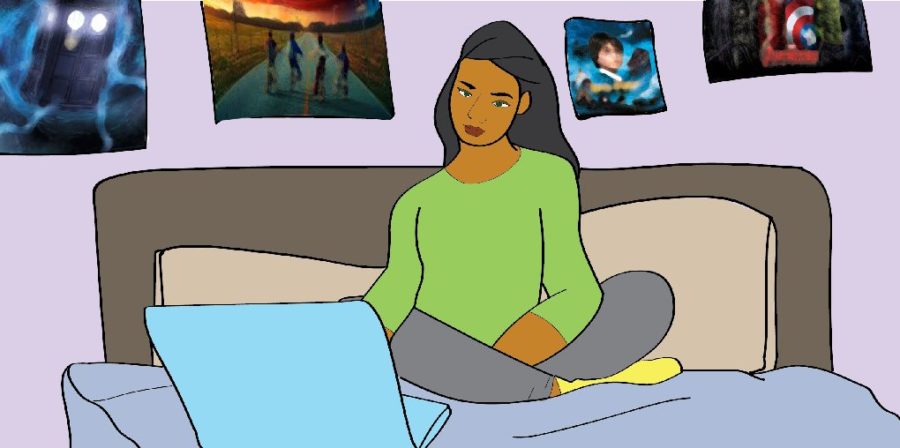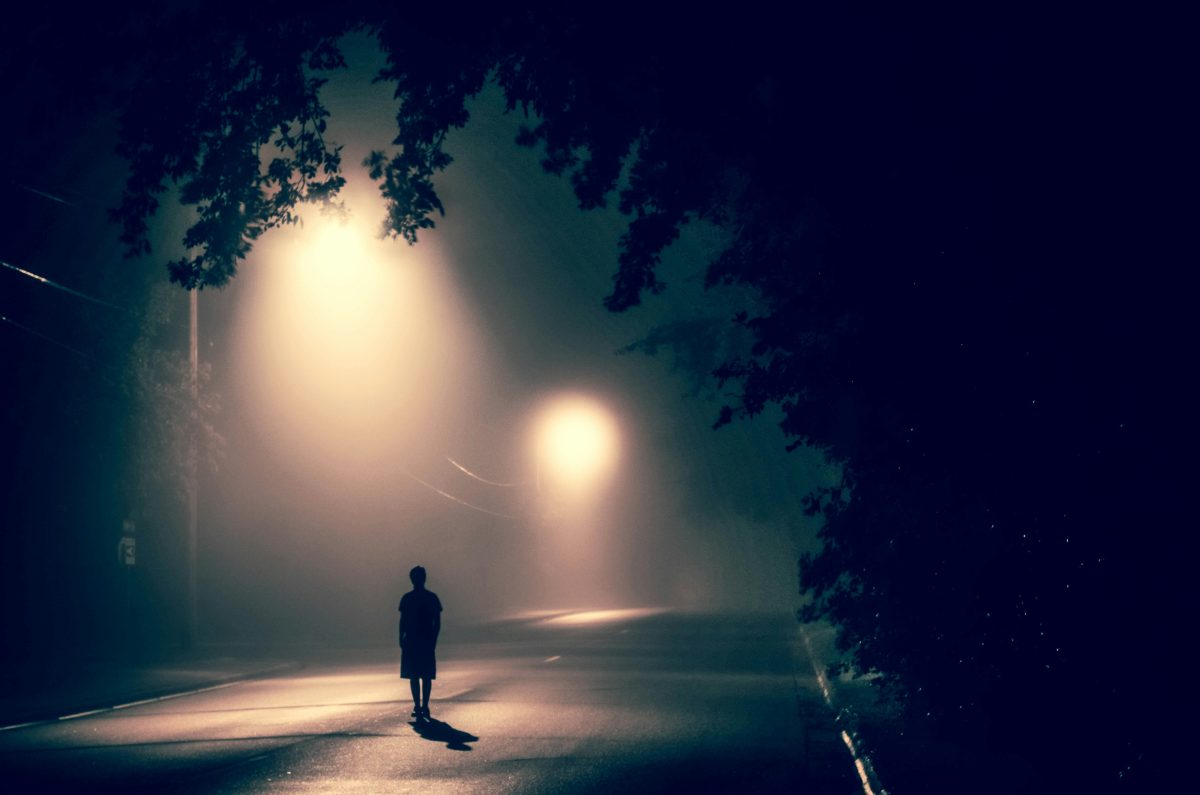Illustration by Lillie Busch
The first published fan fiction was pioneered by a “Star Trek” fanzine titled “Spockanalia” in 1967. However, this instance was not the invention of fan fiction.
In 1320, poet Dante Alighieri inserted himself in his own “Divine Comedy” fiction to meet philosopher Virgil, among other famous figures of the time.
More recently, E.L. James’ scandalous “Fifty Shades of Grey” novels were “Twilight” fan fiction published online before becoming books sitting on housewives’ bedside tables. This past summer, singer/songwriter Ingrid Michaelson wrote and released an entire album inspired by the Netflix show “Stranger Things”.
The longest piece of literature written in recent history is “The Subspace Emissary’s Worlds Conquest”, a Super Smash Brothers fan fiction that totals at 221 chapters and 4,102,328 words. To put those numbers in perspective, the complete “Harry Potter” book series has a word count of 1,084,170 words.
So why are Dante, James and Michaelson’s works considered valid and are accepted, but not a Super Smash Bros. super tale?
Many reasons contribute to this train of thought, such as the ideas of high versus low culture, and the—assumed—gray legalities. For example, a popular question is: does fan fiction border on copyright infringement?
The short answer is ‘no.’ The long answer is that fan fiction is legal as long as it is classified as a derivative work that does not infringe on copyright laws or the rights of the original creator. Many established creative forces actually endorse fan fiction, like J.K. Rowling as well as Rebecca Sugar, creator of the “Steven Universe” television series.
High and low cultures stem from sociology and classist societies – or, depending on your perspective, mass superiority complexes. High culture usually pertains to the arts, such as attending a reputable ballet performance or the opera. Low culture is a derogatory term for popular culture.
In this context, fan fiction is viewed as being low culture due to its negative connotations: nerdy, obsessive, and so on. It is something to be embarrassed about, instead of being another hobby that is no more extreme than binging “Grey’s Anatomy” for the fifth time.
In today’s era of postmodernism, where anything can be justified if artsy enough, or experimental enough, such lines of high and low cultures are blurred to the point of nonexistence.
This opinion piece is not to say that fan fiction is a genre unto itself, but rather that it is a valid form of self-expression. In terms of legality: no fan fiction authors claim that they own the characters. Fan fiction also allows writers to exercise their skills, especially without the added stress of creating new characters and a new world.
However, fan fiction does not only serve its authors. Fan fiction is a symbiotic relationship: it is written to be consumed by an audience and unite a community. What is better than reentering a story that you assumed to be finished? Fans consume all types of fan-work: fan art, fan playlists and fan fiction. Also, fan fiction teaches others to be better and more enthusiastic readers; it offers a great reprieve from the required reading of the classics.
Ultimately, fan fiction is simply another form of storytelling, because stories are for both the storyteller and their audience.





